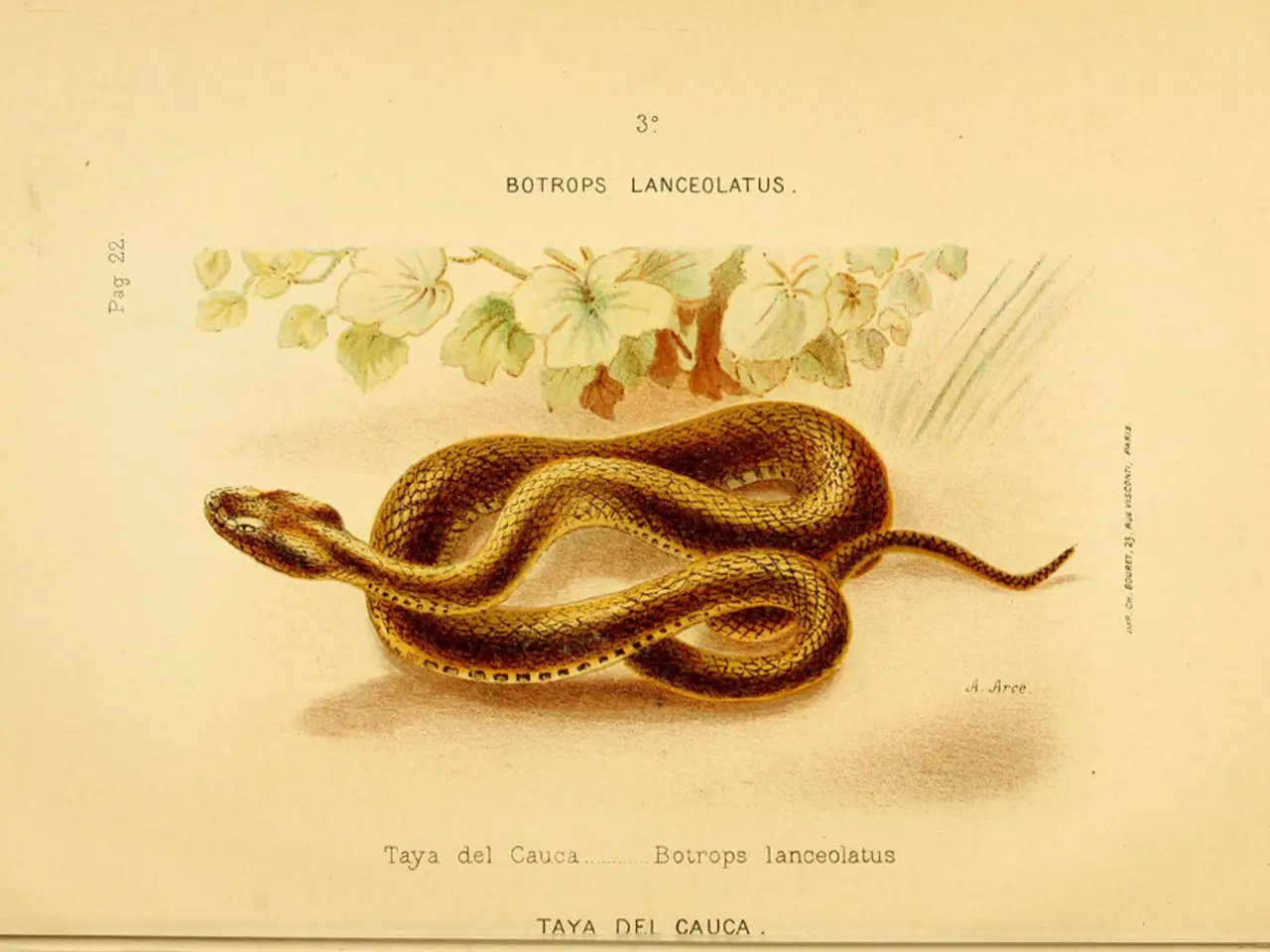Ancient Symbolism Unveiled: Snake Imagery found in Every Prehistoric Culture Globally
In the annals of human history, the symbol of the serpent has been a persistent and captivating motif, spanning continents and millennia. From the ancient rock art of Aboriginal Australia, depicting the Rainbow Serpent, to the intricate carvings at Göbekli Tepe in southeastern Turkey, dating back nearly 11,000 years, the serpent has been a powerful and enigmatic symbol in the world's earliest civilizations.
The Rainbow Serpent, believed to have shaped the land itself in Western Australia's Kimberley region, is just one example of the correlation between serpent myths and the natural world. Across continents, this symbolism appears with remarkable consistency, suggesting that the serpent may have represented a complex blend of ideas related to healing, fertility, cosmic order, duality, and rebirth.
In ancient Greece, serpents were connected with Asclepius, the god of healing, and featured prominently in temples devoted to medicine. This idea of serpents as agents of divine healing power also appears in other cultures, linking snakes to the mysterious forces of nature that aid human health.
In Indian culture, snakes symbolize fertility, erotic power, and cosmic preservation. Figures like Nagas (serpent deities) and Sheshanaga, who is depicted as the eternal serpent supporting Lord Vishnu, symbolizing time and infinity, underpin cosmic order.
The Mesoamerican Feathered Serpent, embodied by gods like Quetzalcoatl and Kukulkan, embodies duality—feathers signify the sky and divinity, while the serpent aspect relates to the earth and human nature. This dualism underscores a universal theme of life connecting heaven and earth.
Serpents shedding their skin symbolize renewal and rebirth, a motif seen across cultures, including the Bible where serpent imagery carries varied meanings, from evil to life and rebirth.
Mythologists, such as Joseph Campbell, have independently reached similar conclusions about the symbolic power of snakes. Campbell often portrayed serpents as obstacles and guides in the hero's journey, embodying the complex spiritual and existential themes transcending geography.
In ancient Egypt, the cobra goddess Wadjet was a divine protector and embodied sovereignty, fire, and the divine right to rule. Wadjet was also associated with the Nile floods, which brought fertility to the land.
Despite decades of scholarship, the exact meaning of the serpent symbol remains open to interpretation. Some scholars, like Swiss psychiatrist Carl Gustav Jung, argue that serpent imagery represents a universal archetype. The Rosetta Stone, discovered in 1799, contains ancient Egyptian hieroglyphs that unlocked the voices of a long-lost civilization, offering insight into the symbol's significance in ancient Egypt.
The recurrence of serpent symbolism globally arises from convergent cultural responses to shared human experiences related to nature, life cycles, healing, and the cosmos, often embodied in the serpent's mysterious form and behaviors. This shared symbolism is both a result of independent development—due to the snake's striking physical and behavioral characteristics—and cultural diffusion in ancient times, where ideas spread through trade and contact.
In summary, serpent symbolism endures worldwide because serpents uniquely and powerfully symbolize life's fundamental mysteries—healing, fertility, duality, and transformation—universal themes central to many ancient cultures' art, mythology, and religion. These symbols continue to captivate and inspire, serving as a testament to the enduring human fascination with the unknown.
[1] Source: Encyclopædia Britannica. (2021). Asclepius. https://www.britannica.com/topic/Asclepius [2] Source: Encyclopædia Britannica. (2021). Sheshanaga. https://www.britannica.com/topic/Sheshanaga [3] Source: Encyclopædia Britannica. (2021). Quetzalcoatl. https://www.britannica.com/topic/Quetzalcoatl [4] Source: Encyclopædia Britannica. (2021). Kukulkan. https://www.britannica.com/topic/Kukulkan [5] Source: Encyclopædia Britannica. (2021). Serpent. https://www.britannica.com/topic/serpent/Mythology-and-folklore
[1] The captivation with serpent symbolism in various fashion-and-beauty trends might stem from the enigmatic representation of life's fundamental mysteries, as seen in Western history where serpent designs were prevalent in clothing.
[2] As travelers explore pyramids in Egypt, they may find serpent images etched on their walls, echoing the symbol's strong connection to history and mythology — a testament to the reverence ancient cultures had for these elusive creatures.
[3] In multicultural societies, food-and-drink festivals often incorporate serpent motifs, reflecting the symbol's resonance with themes of healing, fertility, and rebirth - universal aspects of life that many civilizations sought to honor and celebrate.




